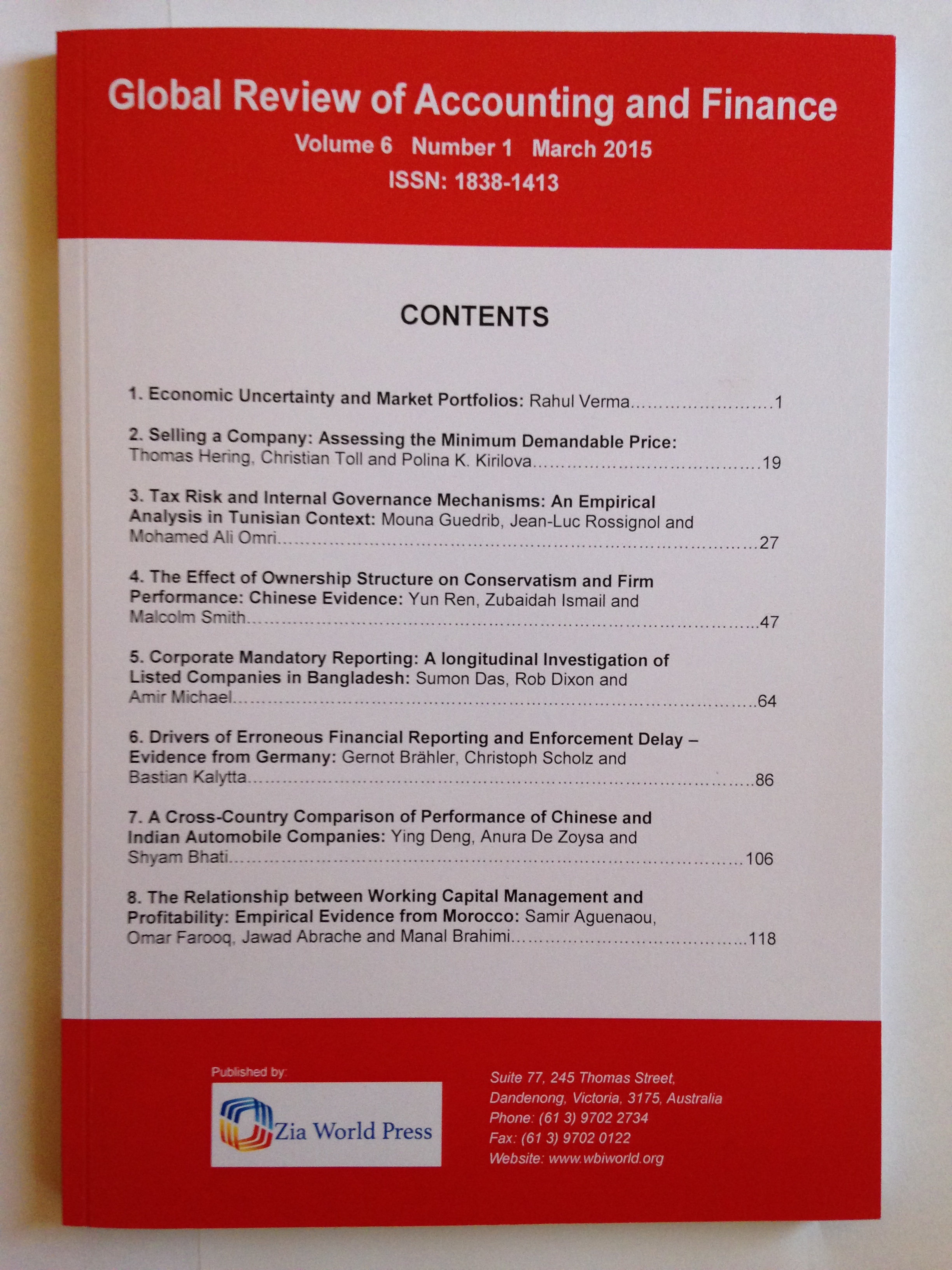Pages
1 – 28
Author: D Dulani Jayasuriya
This paper provides a review of the recent literature in banking around several primary themes of competition and bank ownership. This review is presented against the backdrop of the 2008 financial crisis and the revolution it caused to banking sectors in across the globe. Several themes emerge from this review, regarding bank completion, capital allocation, bank ownership and financial stability. Moreover, the overarching issue related to better understanding bank risk taking incentives through ownership and competition and the implications for financial stability are highlighted.
Pages
29 – 46
Author: Tianshu Liu and Jae-Seung Baek
Harry Markowitz (1959) develops a mean-variance model for efficient portfolio management. Based on this model, Sharpe (1964), Lintner (1965) and Black (1972) build the CAPM. Merton (1973) then generalizes the CAPM and proposes the ICAPM. Afterwards, Fama and French (1996) take the idea of Ross’s (1976) arbitrage pricing theory and construct a three-factor model. The Fama-French three-factor model explains covariation in average returns around the capital market in the world. However, empirical findings are not in favour of the use of the CAPM that may arise from the features of Chinese capital market which are state-owned system and non-capitalization. The purpose of this research is to explore the explanatory power of asset pricing models in regards to investor behaviour in Chinese stock market. The findings of this study are that the Fama-French three-factor model better explains time-series variation in stock returns than the CAPM. Size effect exists in Shanghai and China (Shanghai and Shenzhen) stock market. However, value effect is found only in Shanghai stock market. Empirical results also show that, in Shanghai stock market, firms with low E/P ratios tend to have higher returns and firms with higher E/P ratios tend to have lower returns. Robustness tests show that the Fama-French three-factor model is better than CAPM to explain stock return variation in Chinese stock market.
Pages
47 – 76
Author: Ming-Chang Cheng, Yung-Huei Chen, Chien-Chi Lee, and Phuong-Anh Le
This paper research investigates the impact of anti-dumping policy on the import volume of shrimp product in the United States, also analysis the trade diversion effect of the U.S anti-dumping duty in the period of time from January 1989 to December 2017. This research comes up with the results that the anti-dumping duty has the significant negative impact to the import volume of shrimp product from both subject countries and non-subject countries. There is also a trade diversion effect after the US has imposed the anti-dumping duty, resulting in increasing the export volume in shrimp product of the subject countries to the third market.

